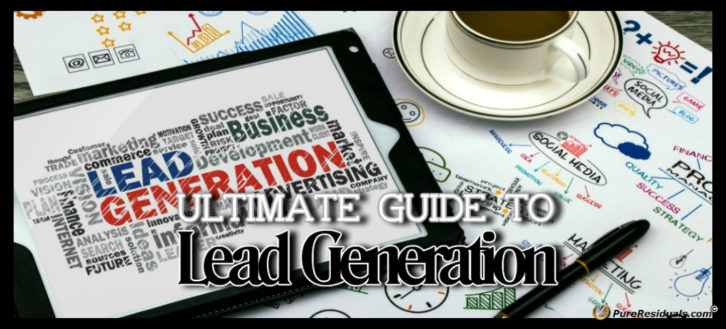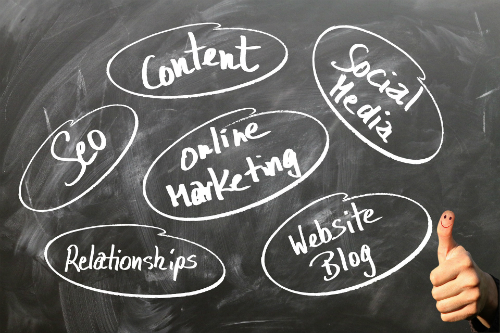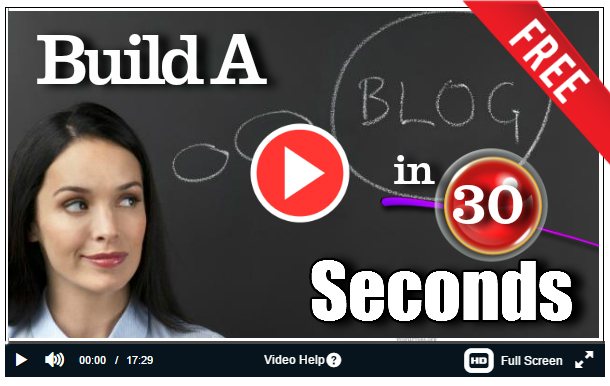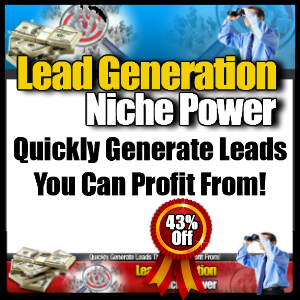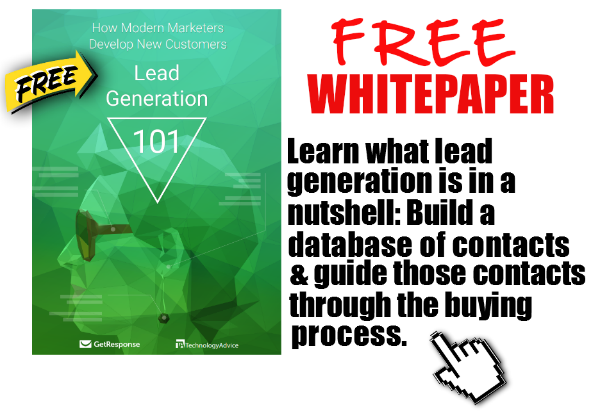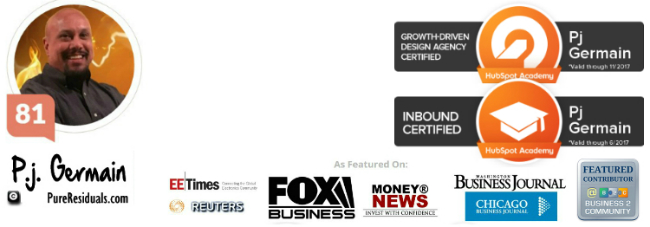The Ultimate Lead Generation Guide
What Is A Lead?
A Lead is a prospective customer who visits your site, get interested in whatever you are offering, and voluntarily fill in their contact information.
In marketing context, a visitor to your site becomes a lead when:
- They register a product demo, free trial, or a webinar
- Send you an email or call you to get more information about your services, offers, or products
- Fill the lead capture form and provide their contact details voluntarily
What Is Lead Generation?
Lead generation refers to the collaborative process of tempting visitors to your site, warming them as potential buyers, and persuading them to provide their contact information willingly. You may create leads for the purpose of e-newsletter list acquisition, list building, or for sales.
Generating leads, both high in quantity and quality, is the primary objective of any marketer. However, most marketers view lead generation as an art, and one needs to be proficient in the art to generate high-quality and sales-ready leads.
However, lead generation is more than art as it is based on a systematic approach, best practices, well-defined process, constant improvement, and continuous testing. Generating constant leads is essential for an online business looking to thrive in today’s ever-so-chaotic and ever-so-competitive market. As a matter of fact, the success of an online business can be gauged by how well it can generate leads. Lead generation is the lifeblood of an online business. It helps bridge your relationship with your customers, build brand awareness, generate leads, and ultimately increase your conversion.
Lead generation is the lifeblood of an online business.Click To Tweet
Why Do You Need Lead Generation?
In an attempt to take your business off the ground and make sales, you need to have significant high-quality and sale-ready leads. This is where the lead generation strategies help a lot. It helps you create interest of your target audience in the services or products that you’re offering. Lead generation involves spreading your brand awareness, persuading potential customers, and making sales.
However, different buyers have varied levels of interest, and their level of interest may vary from non-existence to sales-ready. So, how do you maximize the tapping of prospective buyers with real interest on you product? You just need to segregate your prospect buyers on the basis of their level of interest and then devise real lead generation strategies to capture their interest and attention towards your services, products, or offers.
In fact, in the past couple of years, the process of buying has drastically changed, prompting the marketers and sellers to turn to newer methods to capture their consumer’s interest. Rather than following the traditional approach of advertising and mass email blasts, businesses have started focusing on building a long-lasting relationship with their buyers. This is now where lead generation comes into play. This technique helps marketers to be found by the buyers in a way that sparks effective communication and ultimately connects with them. This leads to an increase in the sales.
Lead generation is not only beneficial for the sellers but also for the buyers as well. The buyers can choose the service or product from various business when the marketing strategy of lead generation is used.
B2B marketers report sales lead quality as their #1 most important metric for measuring content marketing success; even more important than sales and conversions.Click To Tweet
Source: Sales Lead Quality
Lead generation helps business to:
- Select the products or services they wish to offer to their consumers
- Pay only for those leads received by them
- Control the number of leads
- Determine the cost on per lead basis
- Select the target buyers they wish to concentrate on
What Are The Challenges Of Lead Generation?
The quality of the leads is the chief priority for Lead Generation and also the primary challenge that marketers encounter these days. Generating quality leads is a huge problem for organizations and business nowadays. Also, other factors that pose significant barriers for the generations of the quality leads include lack of staff, lack of quality data to run the campaign, lack of budgeting and time, lack of resources, etc. Here are some of the other challenges for generating quality leads:
- Lack of resources, budgeting, staffing, and time
- Lack of strategic direction
- Lack of significant supports from information technology
- Lack of synchronization between sales and marketing
- Lack of reliable information and data
- Lack of quality research
How Does Lead Generation Works?
Lead Generation refers to a marketing technique that involves delivering a constant flow of personal information to a business or service provider that is targeted towards a particular service. This marketing technique connects the business to its consumers or potential clients. There are agencies that specialize in offering quality leads to businesses and organizations.
These agencies help to develop sites that are aimed at advertising the products and services of the seller. After that, the buyers can find these directories and websites and fill in a quote request form. The form is then submitted to the agency that verifies the information of the consumer and matches it to the suitable providers. The leads are then sent to the right business with the personal information of the buyer and his/her interests and requirements. This is where the connection between the buyer and the seller is established.
To boost conversions of these prospects, you’ll need to use lead generation strategies to keep your lead funnel full without wasting your budget and time.
So, What Is Lead Funnel?
A lead funnel is a technique that focuses on capturing a lot of prospects and push them from the top of the funnel to the bottom of the funnel, turning these prospects into actual customers.
Understanding the idea behind lead funnel is crucial as it helps one optimize marketing and advertising campaigns to ensure that prospects come out of the funnel as paying customers. Lead funnel takes buyers from the landing page to the point of sale. While for the prospects the lead funnel is segmented into four distinct stages, arranging the phases through the funnel is a little complex for many marketers.
So, How Do You Map Lead Generation to Your Funnel?
Now that you are aware of what a lead funnel is, the next step is to understand where your prospect are in their buying strategy so that you can devise a strategy to lure them into the purchasing whatever you’re offering. Mapping your lead funnel is important as it helps you create campaigns, devise strategies, and build messages.
A lead funnel is mostly divided into three parts;
- TOFU (Top of the Funnel)
- MOFU (Middle of the Funnel)
- BOFU (Bottom of the Funnel)
To be an effective marketer, you need to devise different strategies for each stage of your lead funnel so as to push your prospects from the top funnel, through the middle of the funnel, to finally turn them into actual customers at the funnel.
Top of Funnel (TOFU)
This is a stage where you get the largest amount of leads. Prospects at this stage are only aware of your service or product but haven’t made a decision to buy from your site. This stage is perhaps is the most important of your lead funnel; because how would draw people in if you fail to optimize the top of your lead funnel?
This is where you capture the attention of your prospects and drive them through the buying process. The TOFU stage is further divided into the following sub-stages;
- Name- this is where the prospect visits your site and provide his or her contact details. However, this is not an indicator that they are ready to communicate with your business.
- Engaged– this is where the prospect engages into meaningful and serious communication with your company. They are aware the business has added their contact details in the database, and they expect your business to communicate its offer to them via calls or emails.
- Target– this is the stage where you do an analysis of whether the engaged prospect is a serious buyer or not. Only when the engaged prospects have been qualified are moved to the next stage of the funnel.
Middle of Funnel (MOFU)
Here you need to nurture your leads till they become paying customers. The goal of this stage is to make your lead get acquainted with your services, products, and business. You’ll need to let them know your landing page, your website, etc. the idea is to make them understand how your business can help them.
Middle of the Funnel is where you create trust and gently advertise what your business is offering. The MOFU stage is divided into the following sub-stages;
- Lead– you’ve been able to turn your target into a qualifying lead. If you discover that your lead is not yet qualified to become a paying customer, you take them to the target stage for more nurturing. If they have qualified, you need to reach them out and connect well with them.
- Sales lead– It is also known as Sales Accepted Lead. This is where you passes your lead to the sales team who will then connect with them directly. The sales team will analyze whether the lead is ready to become actual, paying customer or not. If not, they take them back to the target stage so that they can be nurtured more.
Bottom of Funnel (BOFU)
This is where the actual buying or conversion takes place. It is at the BOFU where you finally turn the sales-ready leads into actual, paying customers. Naturally, the bottom of the funnel stage remains of the most critical parts of the lead generation process. It is at this stage that you promote offers that are specific to your services or products. The BOFU is divided into the following sub-stages.
- Opportunity– The leads in this stage spends on your offerings. You need to keep their interest high and pursue them properly. You can get them into a commitment by offering something like a discount, a demo, or free consultation.
- Customer– this is a lead who has spent on your products or services. It is an important stage as it adds to the overall conversion for your business.
- After you successful maps out your lead funnel and have a good idea of the behavior of the visitors on your site, it is important to build a lead generation program that resonates well with the consumers and influences their purchasing decisions.
Now that you understand the lead generation process and the challenges of lead generation, the next thing is to start capturing as many leads as possible and building your subscriber base.
But before then, you’ll need to understand the components of the lead generation process.
The Mechanics of Lead Generation
There are four components of the lead generation process;
1. Landing Page
A landing page refers to the web page where the visitor lands for a distinctive purpose. While the primary reason for setting a landing page is to capture leads, it can also be used for various reasons such as increasing the conversion rate marketing.
2. Forms
This includes the pages where the prospects fill in their personal and contact information. Forms are hosted on the landing page. They consist several fields where the visitor fills in their details in exchange for several offers such as weekly newsletter and discounts.
3. Offer
An offer is something or content of value that’s normally offered on the landing page. The offer must be of value to the visitors to merit their contact information in exchange for access to it.
4. Call-to-Action
A CTA or call-to-action is a button, message, or image that calls website members to take certain actions. When it comes to lead generation, the message communicated should be to fill out a form on your landing page in order to redeem the offer.
Let’s now focus on the types of lead generation
Types of Lead Generation
There are two primary types of Lead Generation; Inbound and Outbound lead generation. Therefore, before selecting the lead generation category, one must consider the customer retention marketing techniques used. Both inbound and outbound techniques can produce great results, but only if chosen and implemented correctly.
Inbound Marketing
Inbound marketing is a lead generation technique that helps prospective customers locate companies or business even before they wish to buy services or products and then convert this knowledge into brand preference. Therefore, inbound marketing helps companies and business to generate revenue and leads from that point forward. Nowadays, marketers do not rely solely on marketing events, cold calling, and advertisement to get leads.
One need to understand the inbound marketing techniques to increase the impact of lead generation. For this reason, marketers must strive to create a suitable and proper mix of content that’s both useful and entertaining to create a meaningful and long-lasting relationship with the consumers.
The common tactics for inbound lead generation include:
a) Website
A great website is an absolute and obvious necessity for any business regardless of its size. A visitor on a website can be converted to a buyer only if the website is well arranged with everything in place. This can be either through asking your visitor to fill out forms or sign up for newsletters. To maximize conversion, pay attention to the design, layout, the forms, the content, and Call-to-Action. Build a website in 30 seconds: Wealthy Affiliate Review
b) SEO and Content
Content Marketing s the backbone of inbound marketing and content marketing. It is also a marketing method that helps develop and distribute informative content to keep the consumers engaged. The major search engines relate high-quality content to the quality website.
c) Social Media
Social media marketing is among the most popular marketing methods today and is the preferred and commonly used inbound lead generation technique for most businesses. Buyers get an opportunity to research services and products, learn about how they will meet their needs, and even purchase them through social media channels. You can create trust and engage customers by being on all the social media channels; from Twitter and Facebook to Google+ and LinkedIn.
94% of B2B marketers use LinkedIn as part of their content strategy. Other popular platforms include Twitter (87%), Facebook (84%), YouTube (74%) and Google+ (62%)Click To Tweet
Source: Effective B2B Content Marketing
d) Blog
A blog offers a superb platform to gain the trust of audiences and buyers. Visitors can reach your blog from the web and thus it’s important to keep your blogs fully optimized. A blog must be rich in content, highly informative, without simple/careless grammatical mistakes. It should also be interesting to read so as to capture the readers and visitors. You should publish content that is interesting and informative to keep the readers curious so that they can be frequent visitors to your site. Check out my article on the Best Blogging Platforms
Outbound Marketing
It’s a great idea to have a good marketing mix of both inbound and outbound marketing. Even if inbound marketing has been on the rise in the recent past, coupling it with outbound marketing helps to push the efforts of the former and target specific opportunities.
Outbound marketing involves using outbound mediums to pass your message and information to the potential customers through rented attention. The methods of outbound marketing make use of Call-To-Action and are highly target specific. It draws attention to your business and can give a push to your purchasers. While inbound marketing encourages prospects to make a buying decision, the outbound techniques are meant to give the needed push in the right direction.
The combination of these two marketing techniques can dramatically increase sharing, raise the readers of your business content, and raise the leads.
The following are the major tactics of outbound marketing;
a) Pay-Per-Click Ads
PPC or Pay-Per-Click ads are those for which you pay for each click on your ad displayed on the web. These ads act as a superb way to capture the attention of visitors regarding the latest content, product, or service offerings. They can also serve to generate quality leads
55% of B2B marketers report that search engine marketing (SEM) is their most effective paid advertising method.Click To Tweet
Source: Effective B2B Content Marketing
b) Display Ads
This is another great example of outbound marketing. Such ads are targeted to a huge range of demographics and certain behavioral actions. Marketers can choose where they want their ad to be published, and this enables them to increase their lead generation.
c) Email Marketing
Email marketing is an important part of any marketing campaign. An email is the easiest and best form of communicating with customers and thus is the most used lead generation tactic by business and online marketers.
d) Direct Mail
Direct Mail was a concept of the past, but it’s still as effective as it used to be. You can keep the customers aware of your new services, new product, and changes made via Direct Mail technique. It is a simple and a direct way to capture the attention of your consumers and add potential buyers as well.
e) Events
Event marketing is still a trending and popular marketing technique. Events help to generate a buzz and help businesses communicate with their audiences by answering the questions, clarifying solutions and defining their brands.
f) Content Syndication
This is a content sharing method that is meant to promote events, whitepapers, articles and press releases. Through content syndication, your content can appear on the third party sites.
g) Sales Development Reps
Inside Sales or SDRs are aimed at approving and reviewing leads and handing them over to the Sales. The Sales Development Reps ensures that all the marketing leads are passed on to the Sales department to ensure generation of revenue as the ultimate result.
Lead Generation Metrics
Many of the marketing campaigns and programs have fixed and set measurement strategies that are pre-planned. To measure the effectiveness of your lead generation, you must ask yourself some questions such as how and when you will measure your business lead generation.
Here are some of the popular lead generation metrics which business use to track their lead generation campaign:
- Cost per lead- total campaign cost and amount of leads.
- Cost per inquiry- This includes the total cost of lead acquisition and the total amount of inquiries.
- The amount of sales of qualified leads- this shows the number of SQLs sent to the sales department.
- MQL to SAL- SQL and SAL conversion
- SQL to Opportunity- this is Opportunity conversion from SQL
- The quality of SQLs- This shows the percentage of SQLs, which have not been turned by the sales department.
Lead Scoring
Lead scoring refers to a shared marketing and sales methodology used to rank leads according to their sales-readiness. Your lead score is based on the interest the leads show to the business services or products. Lead scoring helps a business rank its prospects in terms of whether they need to be developed with lead nurturing or fast-tracked to sales. It helps to strengthen the business revenue cycle and aligning marketing and sales.
Lead Generation – THE BOTTOM LINE
It wouldn’t be an embellishment to say that the measure of any business marketing strategy is the volume and quality of leads they generate and drive in. By generating leads, you’ll be driving revenue for your business.
However, the ever-growing competition on the web has made the process of lead generation a daunting and difficult task. Despite the wealth of information available to marketers, they’re still struggling to generate quality leads. But with this guide, you can build your market share, easily position your business or company as a thought leader, generate sales-ready leads and penetrate new markets.

